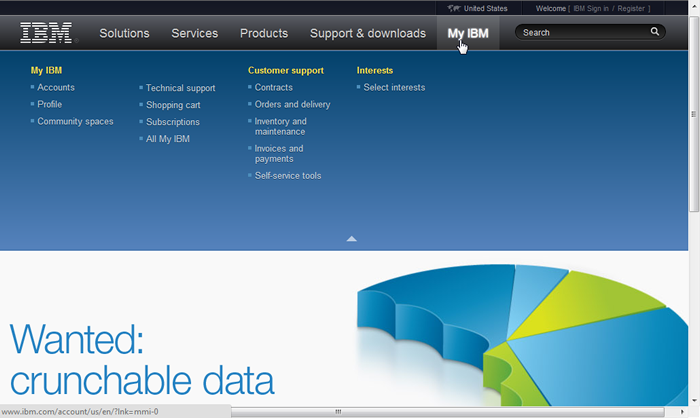Oh hapless user, thou hast been most wickedly deceived. Thou hast been trained into thinking that thou hast to access content in many places to find what thou wantest. Training videos, release notes, online help, technical publications, support content: thou hast been forced to search high and low throughout the realm to find the information thou seekest… that vision of unified content.
 As user advocates, we technical writers should be outraged at the hoops our users have to jump through to find the information they need just because different kinds of content are created by different departments. All too often each department pushes content out to customers in their own ways, for their own reasons, which means we’ve created a mess of the entire user experience.
As user advocates, we technical writers should be outraged at the hoops our users have to jump through to find the information they need just because different kinds of content are created by different departments. All too often each department pushes content out to customers in their own ways, for their own reasons, which means we’ve created a mess of the entire user experience.
A Vision of Unified Content
Picture this: A customer has a question about the great new Whizbang 9.5 software they bought from us. She types in a question, navigates to single site, browses and searches through reams of content, and after reading a KB article, stops to play a video. Users ought to find everything they need, from training videos to operating system requirements, from high-level content to detailed tasks, from reviews to troubleshooting guides, in one place. I know, what a radical concept: make things easy.
Let’s present the users with unified content so they can:
- Search for what they want, knowing that all the relevant stuff is all in one place.
- Leave feedback or ask questions wherever it’s convenient for them.
- Be confident in our products and therefore in our company (if all content can be found in one place, isn’t contradicting itself, and conforms to brand and standards requirements, then confidence about the product and the company soars).
Simply put, our users don’t care which department created the content, how it got there, or which team got credit for updating it. Whether it is training, tech pubs, online help, support, price sheets, marketing, or some other type, to customers, it’s all just content. It’s time to provide a simplified, more usable mechanism for them to find the content they need when they need it.
The Backend of the Unified Customer Content Vision
To support this goal, you’ll need two important ingredients in place: cross-departmental cooperation and processes and standards. It’s no easy feat, but aren’t your users—your customers—worth the effort? At the very high level, you need to:
- Get buy-in. The CEO has to fully endorse this move. Without him/her on board, you cannot succeed; you can’t really even get started.
- Put someone in charge. A high-level operations leader (ideally the chief information officer) is a must –C-level leaders can get various departments working together, and oversee strategies that are both internally efficient and externally usable. Hint: It’s a great time to implement single sourcing and a CMS.
- Think strategically. Use an information architect (or a team of them) to develop and implement strategies around metadata and classification, internal processes, standards, and brand requirements. Then tackle the tools.
- Build usability in from the start. Use an information architect (the user experience kind) who concentrates on creating a usable interface to allow easy searching, browsing, and filtering of content. This is vital—information in great amounts in one place is useless if no one can find what they want quickly and easily.
- Develop feedback and support mechanisms. External communication of any kind is never a one-way street. Make sure there are mechanisms for clients to report an error, get help with a problem, ask a question, or share a solution from anywhere in the site. Mechanisms must have company responsiveness built in. A support issue might be reported on a page of content created by tech pubs or a live chat with Support might reveal a documentation bug or gap in training. Use a system and process that shunts each piece of feedback to the right department(s) to deal with, and then make sure nothing falls through the cracks. An unanswered query means a customer is left twisting in the wind, which builds anger and resentment towards the product and the company each day they are left waiting. And if you don’t think one unanswered issue from one client can have an impact, then you haven’t encountered public humiliation through social media.
- Design the right infrastructure. With a good understanding of customer requirements, architecture, and potential workflows, you’ll be able to define the size of the IT army required to create, support, and maintain the requirements of providing all the unified content to end users whenever they need it.
When You Just Have To Do It One Way
Face it, sometimes the combination of the kind of product you’re offering and the kind of customer who will be using it leads to a common-sense decision to provide some kinds of content in specific places. For example, online help’s usefulness is greatly enhanced when it is displayed dynamically (whether embedded, pop-up, or in a separate window). The key here is to single source the content in online help with the rest of your content. Single sourcing is both internally efficient (less time writing) and externally valuable (content is consistent no matter where they find it). And yes, you can provide a streamlined view of the content in help and the full content elsewhere while still single sourcing (hello, DITA? I need you).
Hurdles to Cross
Implementing a solution to unified customer content is challenging and complex, but it is in our users’ best interest. Knowing in advance that you’ll have hurdles means you can better prepare a solution.
Expect it to be messy. Every decision from the timing of builds versus content library updates (watch out for “uh oh, content is not synchronized now!”), to putting some content behind firewalls and not others, holds its own special hair-tearing quality.
My best advice: Keep things as simple as possible to begin with and always keep working together as a team. Inter-departmental competitiveness is your enemy. Focus on the user instead by constantly asking: How are we as a company making their product experience easier?
Keep in mind that the better the product is to begin with, the less content you need to push out to users. So a month of making the product better for one release can save many months of unified content work by dozens of people each and every release cycle (and hallelujah to the day that your installation guide shrinks and disappears because it “just installs”).
I’ve yet to see a company, large or small, successfully provide unified content. IBM has come closest, I believe, by focusing very heavily on the user experience and also by making installation as easy as possible.

IBM approaches unified content by prioritizing the overall user experience
What is your company doing right or wrong in delivering unified content to your customers? I’d love to hear from you.